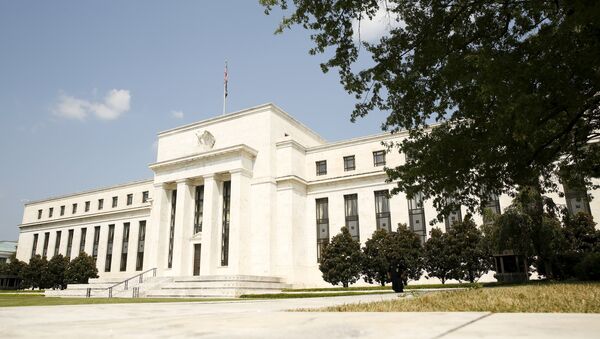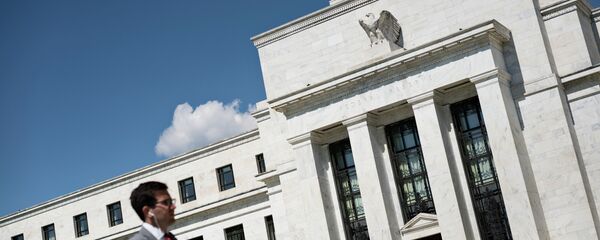Kristian Rouz – Ahead of Fed Chair Janet Yellen’s congressional testimony later this week, President of Federal Reserve Bank of San Francisco John Williams said that the central bank is eyeing one more rate hike this year in the Fed’s effort to bring their monetary policies to normalcy.
Yellen’s testimony before the GOP-controlled Congress later this week is poised to be marked by mounting pressure from lawmakers for the central bank to intensify their efforts bringing US monetary policies in line with their pre-Great Recession conditions. The current borrowing costs environment is still very loose, and credit is too affordable for the White House to start their fiscal stimulus package, which, is the current conditions, could spark uncontrolled asset appreciation.
US Fed rates are currently set within the gauge of 1.00-1.25 percent after the most recent hike last month. The central bank raised their borrowing costs four times since December 2015, by a quarter-point at a time, including in December 2016, and March 2017.
The previous seven years of 0-0.25-percent interest rates have contributed to an enormous expansion of consumer debt, including auto loans, student loans, and credit card debt, suppressed investment activity in the non-financial sector, and pushed property prices to dangerously high levels. Real economic growth, however, has remained subdued ever since the Great Recession ended, and overall economic improvements have been dismal, not least due to monetary policy setbacks.
Williams also said that, albeit the US inflation has recently slowed, at below 1.7 percent year-on-year in June, it will still overshoot the central bank 2-percent target over the coming 12 months. This means the Federal Reserve will have several opportunities to bring the monetary policies more in line with the Congress’ expectations, albeit at a slower pace.
Normalisation of the Fed policies is necessary at this point, even though it might slash off percentage points off GDP growth in the near-term. Part of the reason is that the Trump administration are aiming to invest and attract trillions of dollars into the Main Street economy investment. In order to make such investment profitable, especially for the private sector, central bank rates must be higher, and, ideally, at 5 percent and above. President Donald Trump himself praised the 20-percent borrowing costs environment of the early 1980s, but such a framework seems to be a long shot and rather unnecessary.
The current Federal Reserve policy framework discourages private investors from allocating capital because low rates means low return on investment (ROI), rendering the Main Street economy dependent on subsidies or direct investment from the federal government. Congress’ effort to force the central bank normalise their policies and get rid of its $4.5-trln worth of assets means making the central bank central bank again, or the lender of last resort, instead of being America’s largest asset-holder.
Now, within the Fed, there is stiff resistance from central bankers advocating the old policy framework. James Bullard of the Federal Reserve Bank of St. Louis, said that the Fed should continue rate hikes and commence balance sheet reductions after the White House start their fiscal reform.
"The Fed can afford to wait and see what comes out of the political process," Bullard said. "Some of (White House) policies can provide growth but they've got to get them through Congress … The Fed does not have to be pre-emptively raising rates ahead of reforms."
The problem is, as the US economic growth has failed to accelerate substantially in the past two quarters, further Fed policy tightening might indeed suppress GDP growth further. Yet, the risks of the still-loose monetary policies outweigh the risks of possible near-term economic slowdown.
Current Fed policies subsidise government debt accumulation on the local, state, and federal levels, and, aside of discouraging private investment, they encourage public-private incentives. The issue with the latter is that, in the current conditions, the off-budget fiscal policies are characterised by the lack of transparency in public spending, and the Fed’s backing of budgets of all-levels creates an illusion of unlimited governmental money going into certain projects. This encourages corruption, and funds misallocation, rendering investment counterproductive in terms of economic growth.
Fed policy transmission to the real economy has thus been failing for several years, with the ultra-low rates and trillions of dollar pumped into the economy having failed to spur economic growth. All that being said, despite the Fed preparations for the Trump administration’s economic reform might be painful and bear risks of one-quarter negative growth or a short recession, higher rates and asset sell-offs are necessary to prevent more monetary resources from being squandered to say the least. It is unknown whether Trump’s economic reform will succeed, after all.



